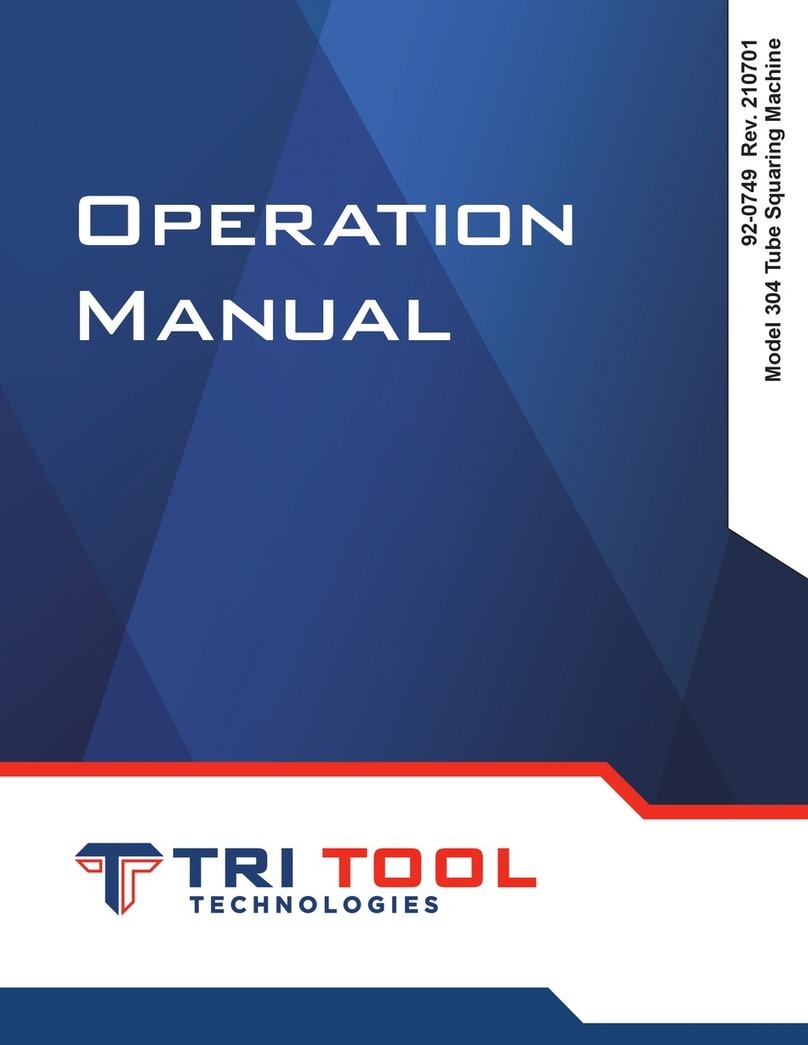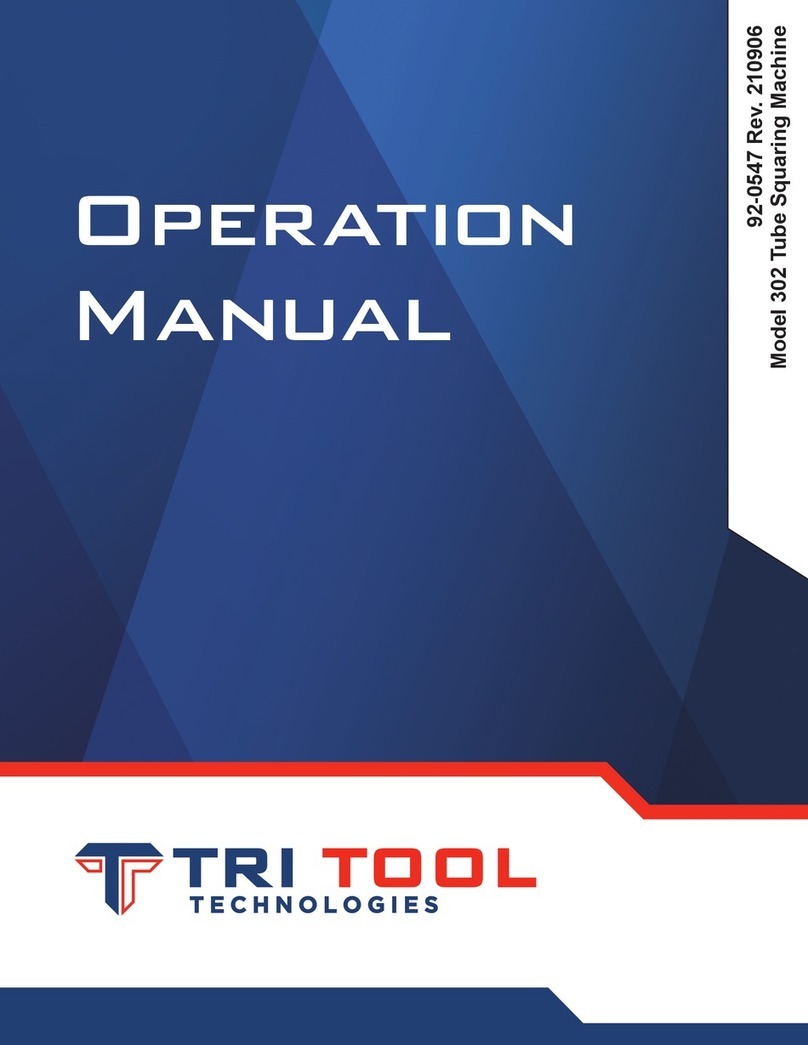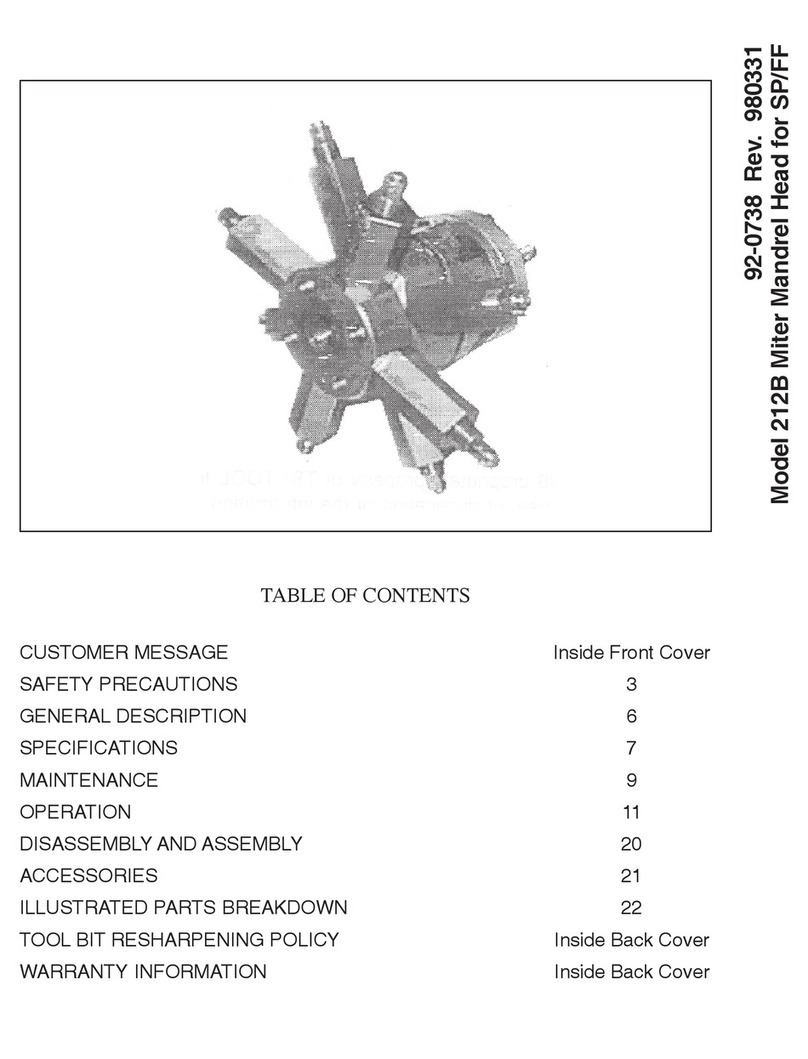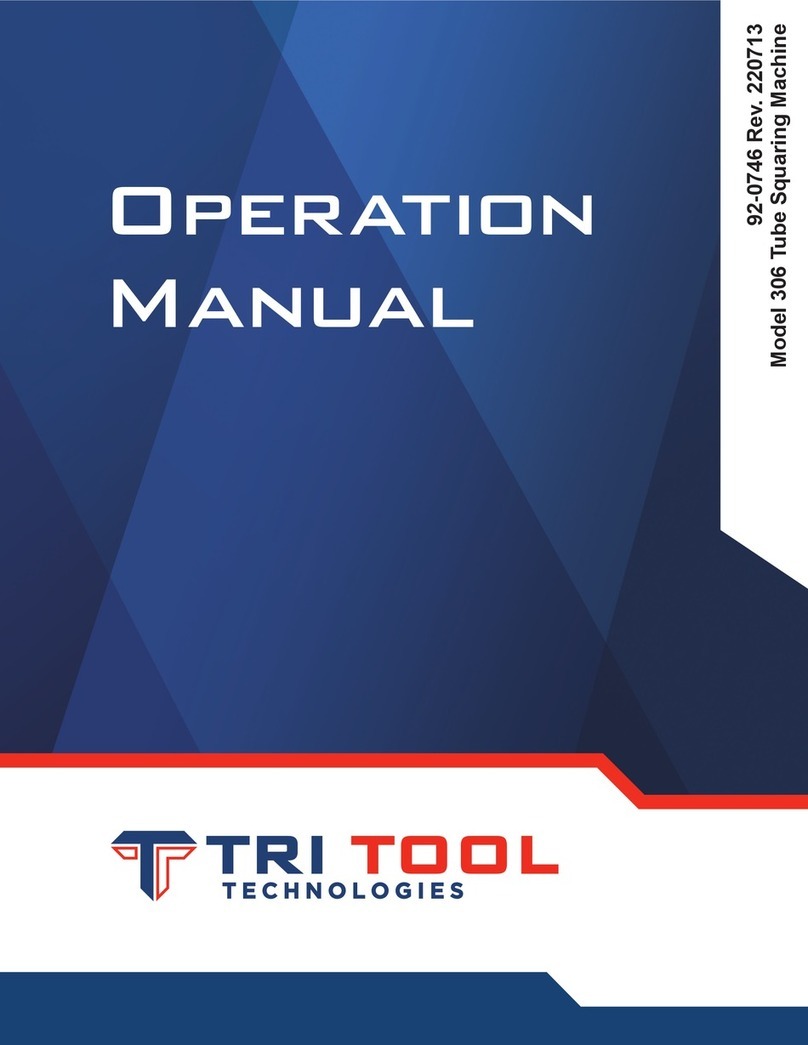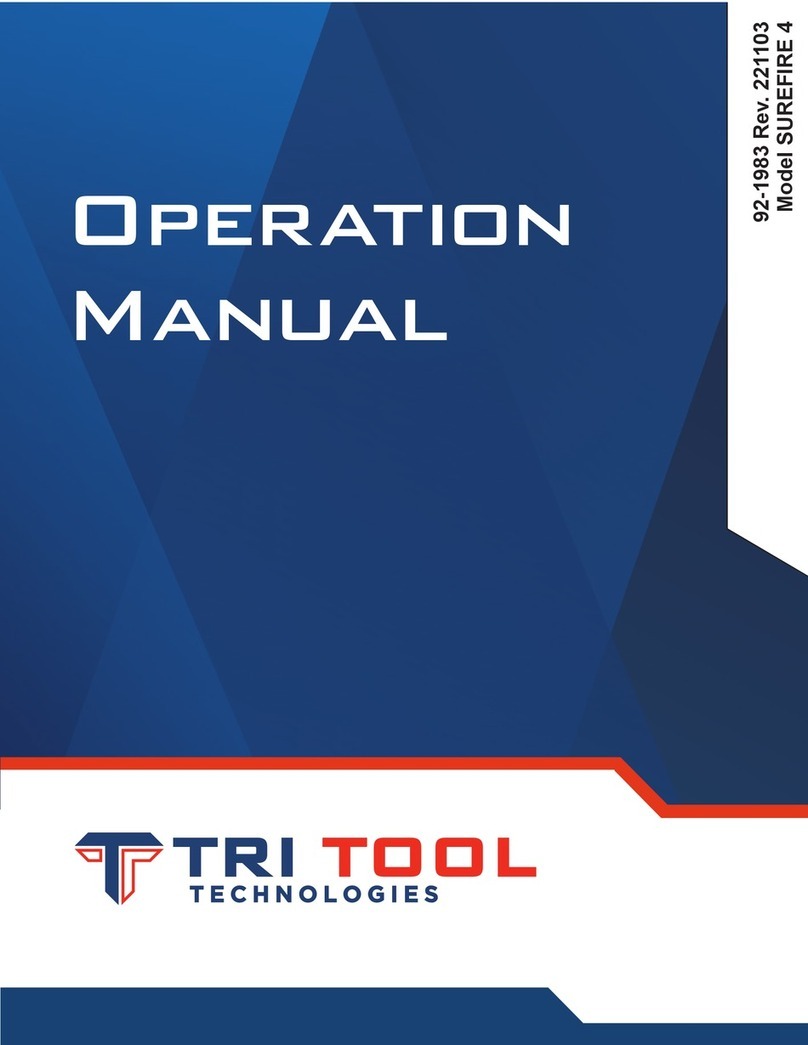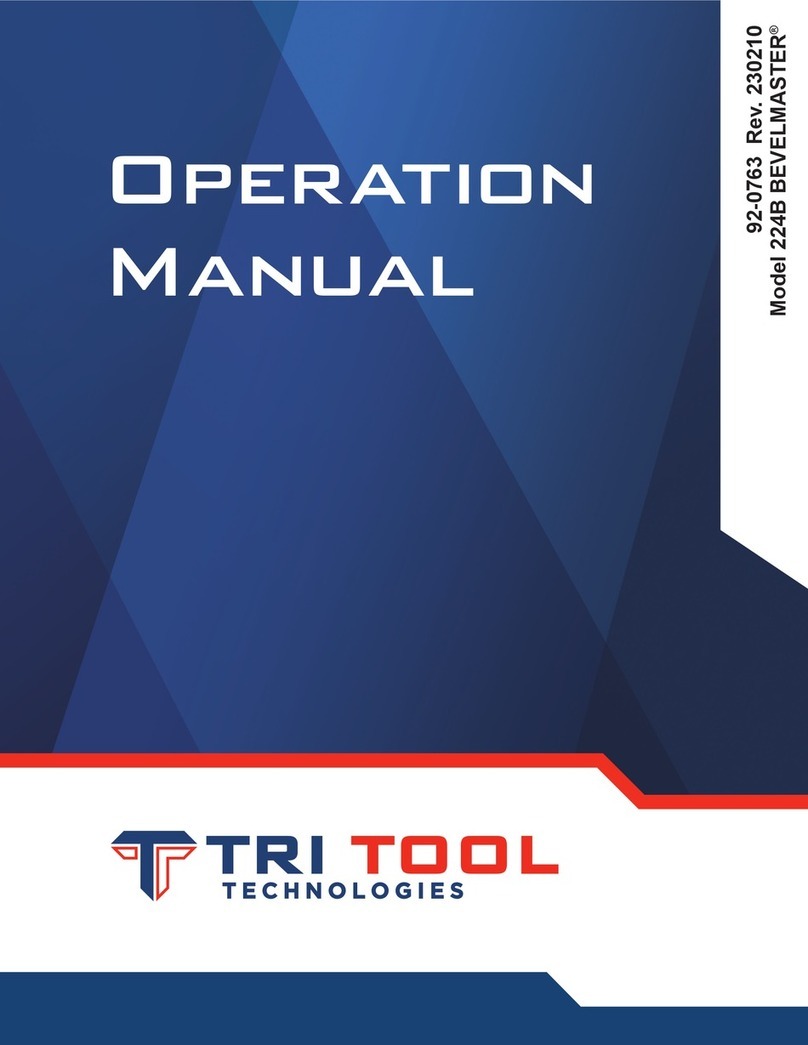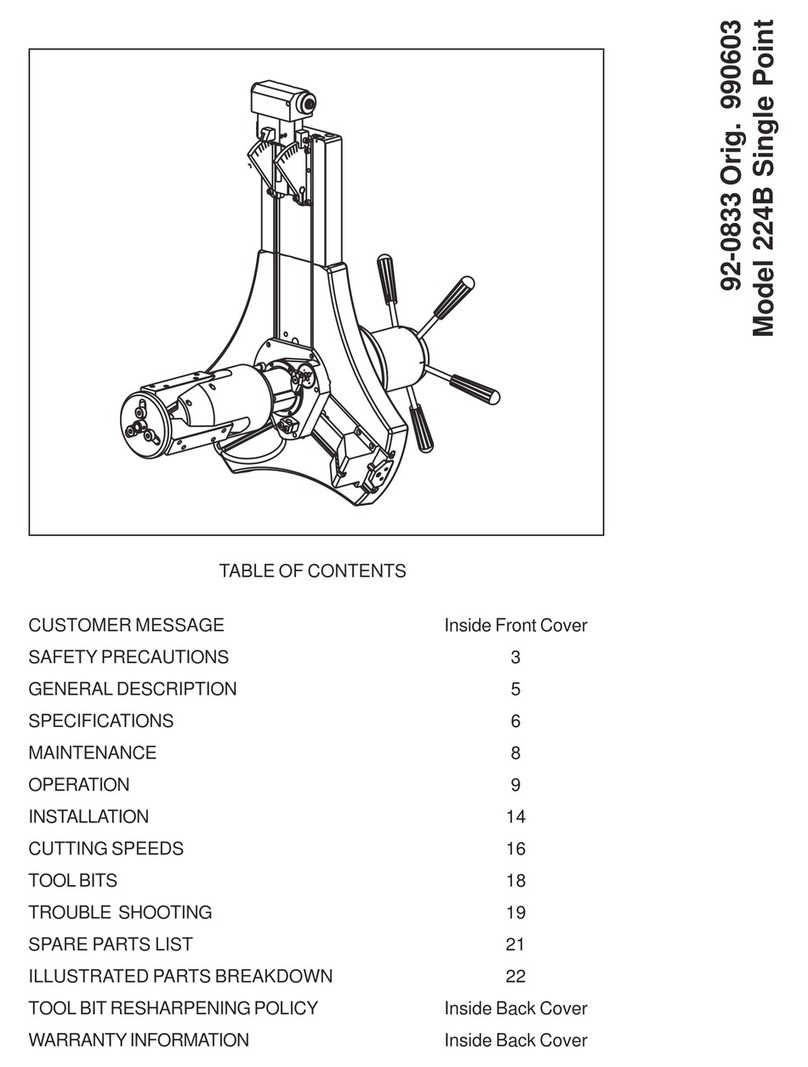
2
TRI TOOL INC.
92-1783 Orig. 161006
TRI TOOL INC. Warranty
All products manufactured by Tri Tool Inc., except for tool bits and for other consumable
items, are warranted to the original purchaser to be free from defects in materials and
workmanship under normal use for a period of one year from the date of purchase.
The purchaser shall bear all shipping, packing and insurance costs and all other costs to
and from a designated repair service center. The product will be returned to the purchaser
freight prepaid and billed to the purchaser.
The warranty will not apply to those products that have been misused, abused, or altered
without the express permission in writing by Tri Tool Inc.
Neither this warranty nor any other warranty, expressed or implied, including implied
warranties of mechanical ability, tness for a particular use, or merchantability, shall
extend beyond the warranty period. No responsibility is assumed for any incidental or
consequential damages.
Some states do not allow limitations on how long an implied warranty lasts and some states
do not allow the exclusion or limitations incidental or consequential damages, so the above
limitation of exclusion does not apply to all purchasers. This warranty gives the purchaser
specic legal rights. Other rights vary from state to state.
Tool Bit Resharpening Policy
Tri Tool Inc. can not resharpen badly gouged, chipped, or broken tool bits. Check the tool
bits before you send them and package them well. Within two working days of receipt, the
tool bits are evaluated and the customer is contacted for authorization.
The customer will receive a price and a scheduled return shipment date. The price structure
is available from your Tri Tool Inc. sales representative.
Tool bits that are not suitable for resharpening are returned with the tool bits that were
resharpened, unless Tri Tool Inc. is instructed otherwise.
The customer is responsible for shipping charges to and from Tri Tool Inc.
This policy only covers tool bits manufactured by Tri Tool Inc.
